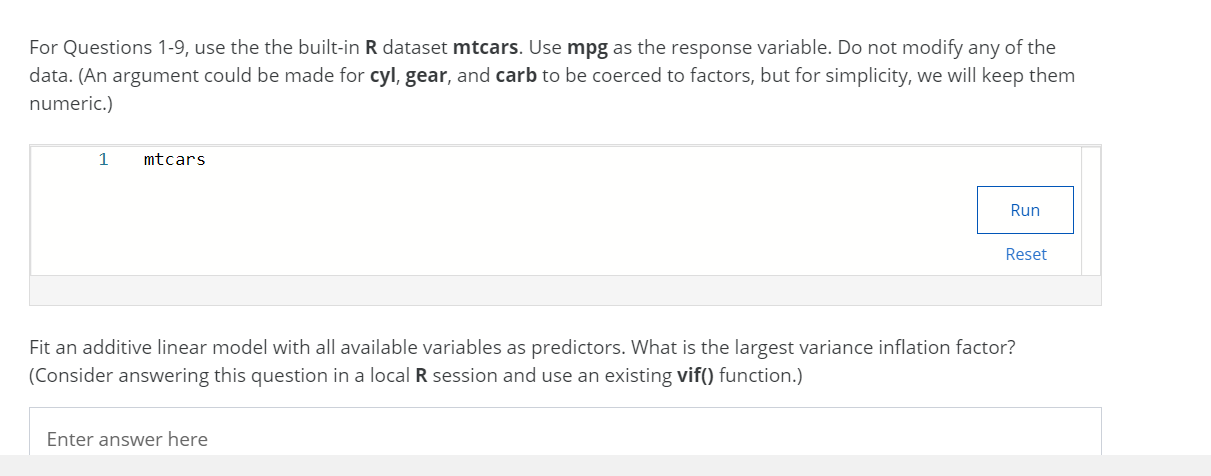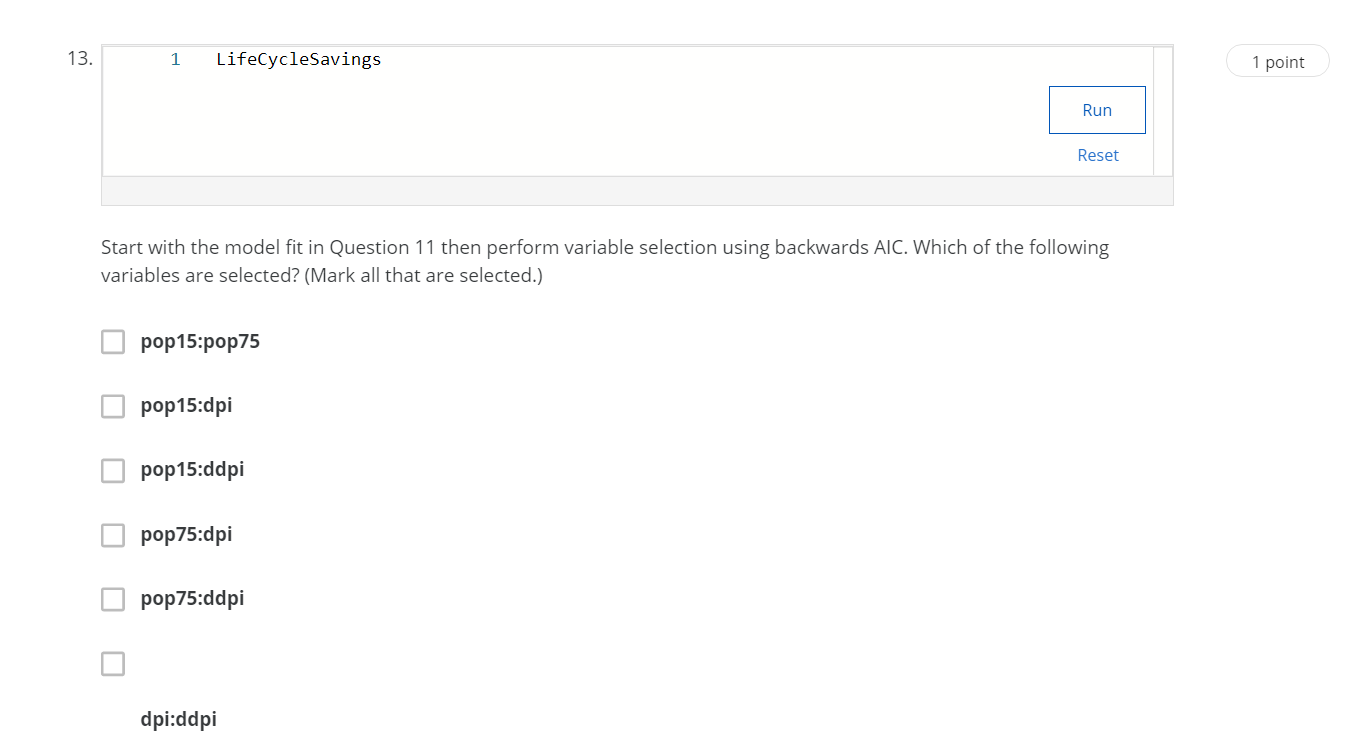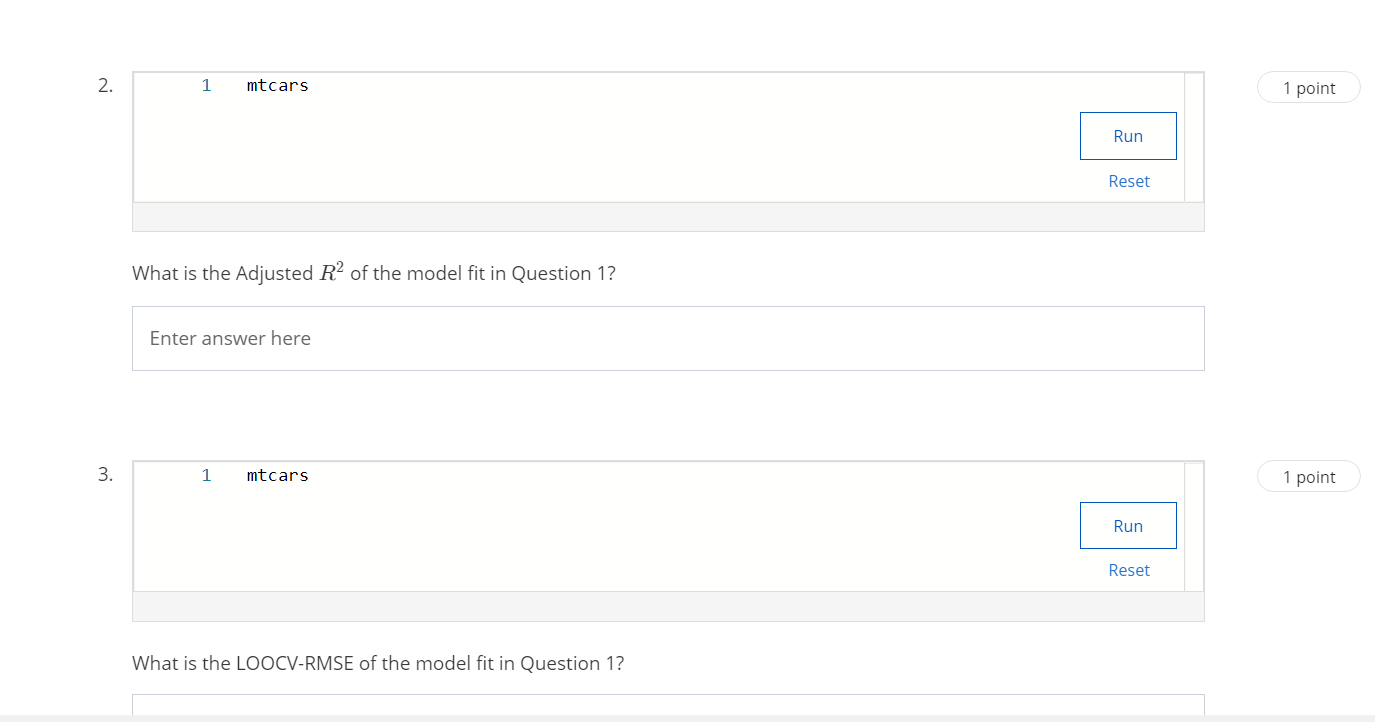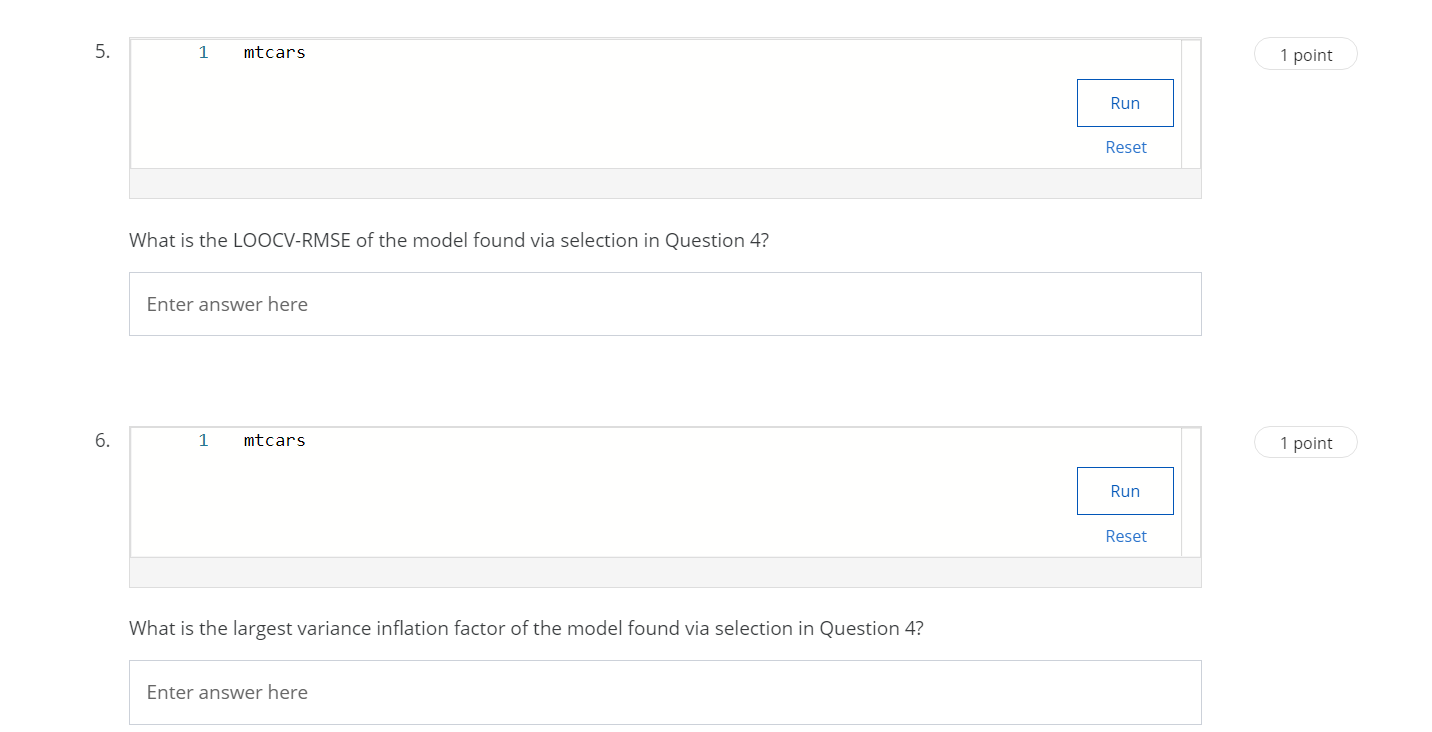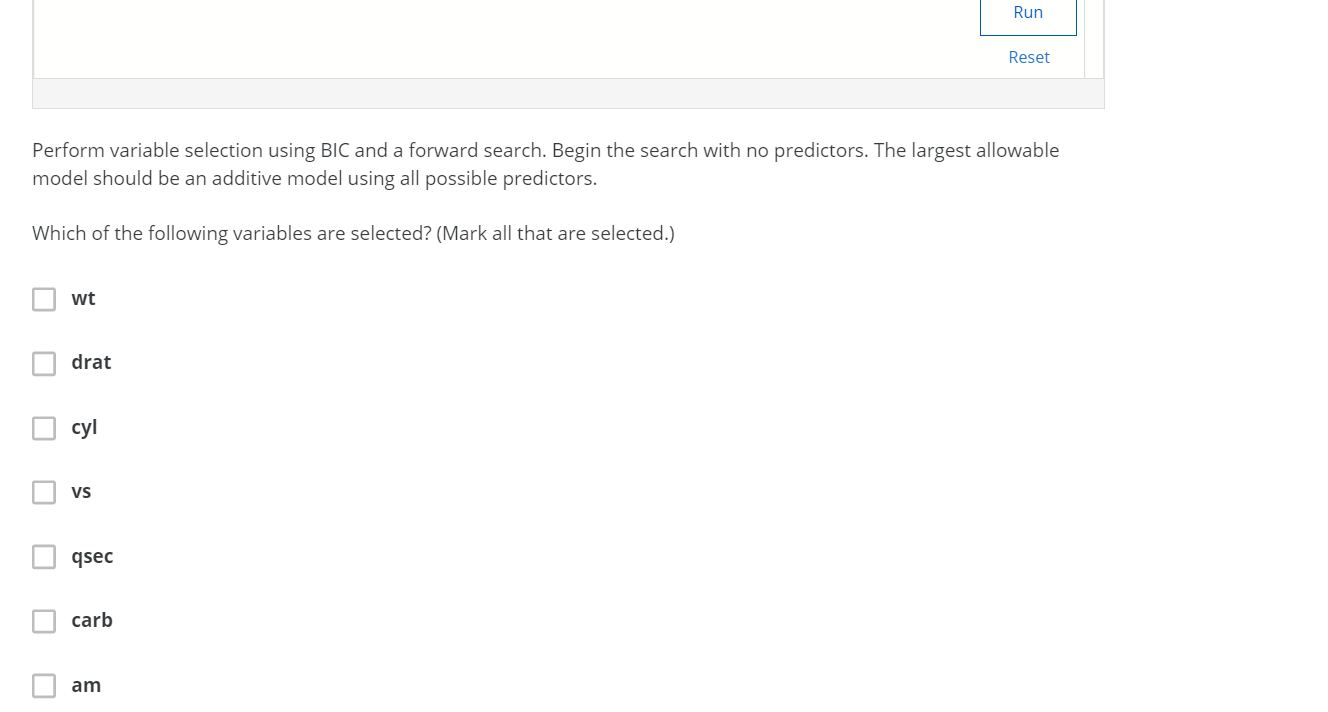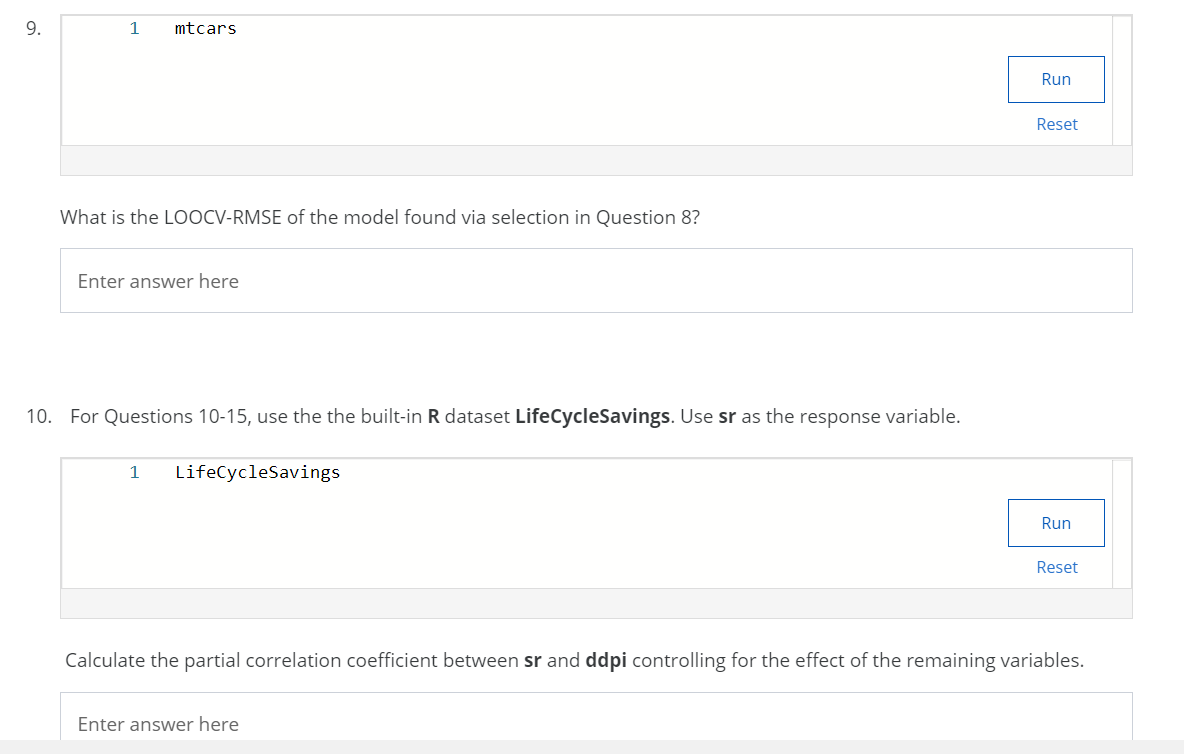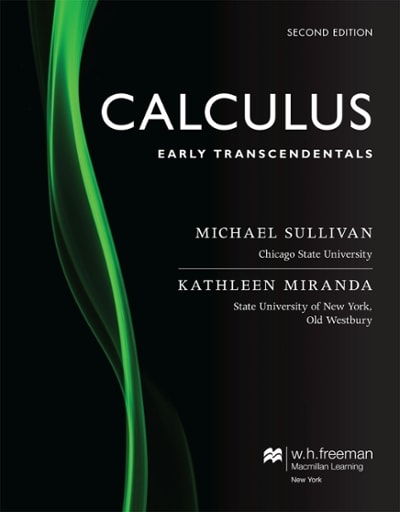For Questions 1-9, use the the built-in R dataset mtcars. Use mpg as the response variable. Do not modify any of the data. (An argument could be made for cyl. gear, and carb to be coerced to factors, but for simplicity, we will keep them numeric.) 1 mtcar's Run Reset Fit an additive linear model with all available variables as predictors. What is the largest variance ination factor? {Consider answering this question in a local R session and use an existing vif() function.) Enter answer here \f\f1 LifeCycleSavings 1 point Run Reset Consider the model in Question 1i, the model found in Question i3, and an additive model with all possible predictors. Based of Adjusted R2. which of these models is best? Report the Adjusted R2 of the model you choose. Eriter answer here 1 Intcar's . 1point . Run Reset What is the Adjusted R2 of the model t in Question 1? Enter answer here 1 lntcar's - 1p0int - Run Reset What is the LOOCV-RMSE of the model fit in Question 1? Run Reset Start with the model fit in Question 1, and then perform variable selection using backwards AIC. Which of the following variables are selected? (Mark all that are selected.) cyl wt drat VS qsec carb am1 mtcar's - 1point - Run Reset What is the LOOCVRMSE of the model found via selection in Question 4? Enter answer here 1 mtcar's 1 point Run Reset What is the largest variance ination factor of the model found via selection in Question 4? Enter answer here 7. Based on the previous questions, which ofthe following is true? (We will refer to the model in Question 1 as the"full 1 point model" and the model found in Question 4 as the "selected model."} 0 The selected model is better for predicting but has collinearity issues. 0 The full model is better for predicting but has collinearity issues. 0 The selected model is better for predicting and does not have collinearity issues. 0 The full model is better for predicting and does not have collinearity issues. Run Reset Perform variable selection using BIC and a forward search. Begin the search with no predictors. The largest allowable model should be an additive model using all possible predictors. Which of the following variables are selected? (Mark all that are selected.) |:| wt D drat cyl vs qsec carb am DECIDE 9 1 mtcars Run Reset What is the LOOCV-RMSE of the model found via selection in Question 8? Enter answer here 10. For Questions 10-15, use the the built-in R dataset LifeCycleSavings. Use sr as the response variable. 1 LifeCycleSavings Run Reset Calculate the partial correlation coefficient between sr and ddpi controlling for the effect of the remaining variables. Enter answer here11 . 1 LifeCycleSavings 1 point Run Reset Fit a model with all available predictors as well as their two-way interactions. What is the Adjusted R2 of this model? Enter answer here\f
